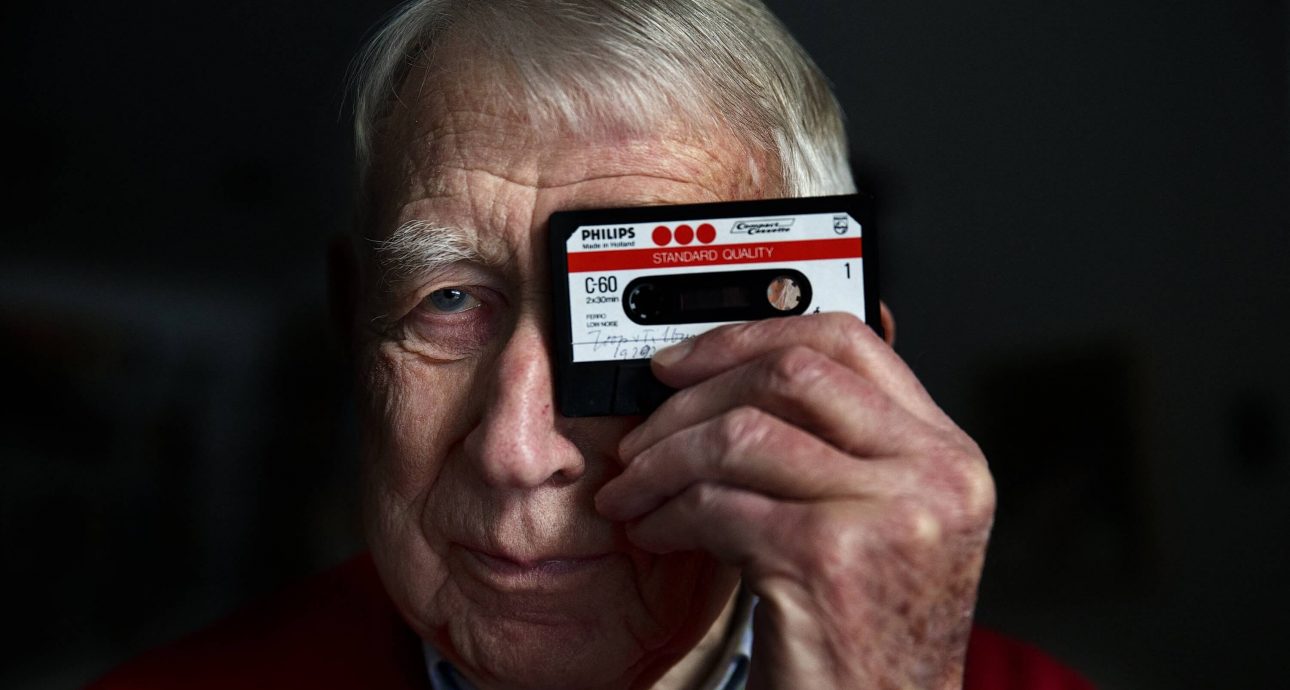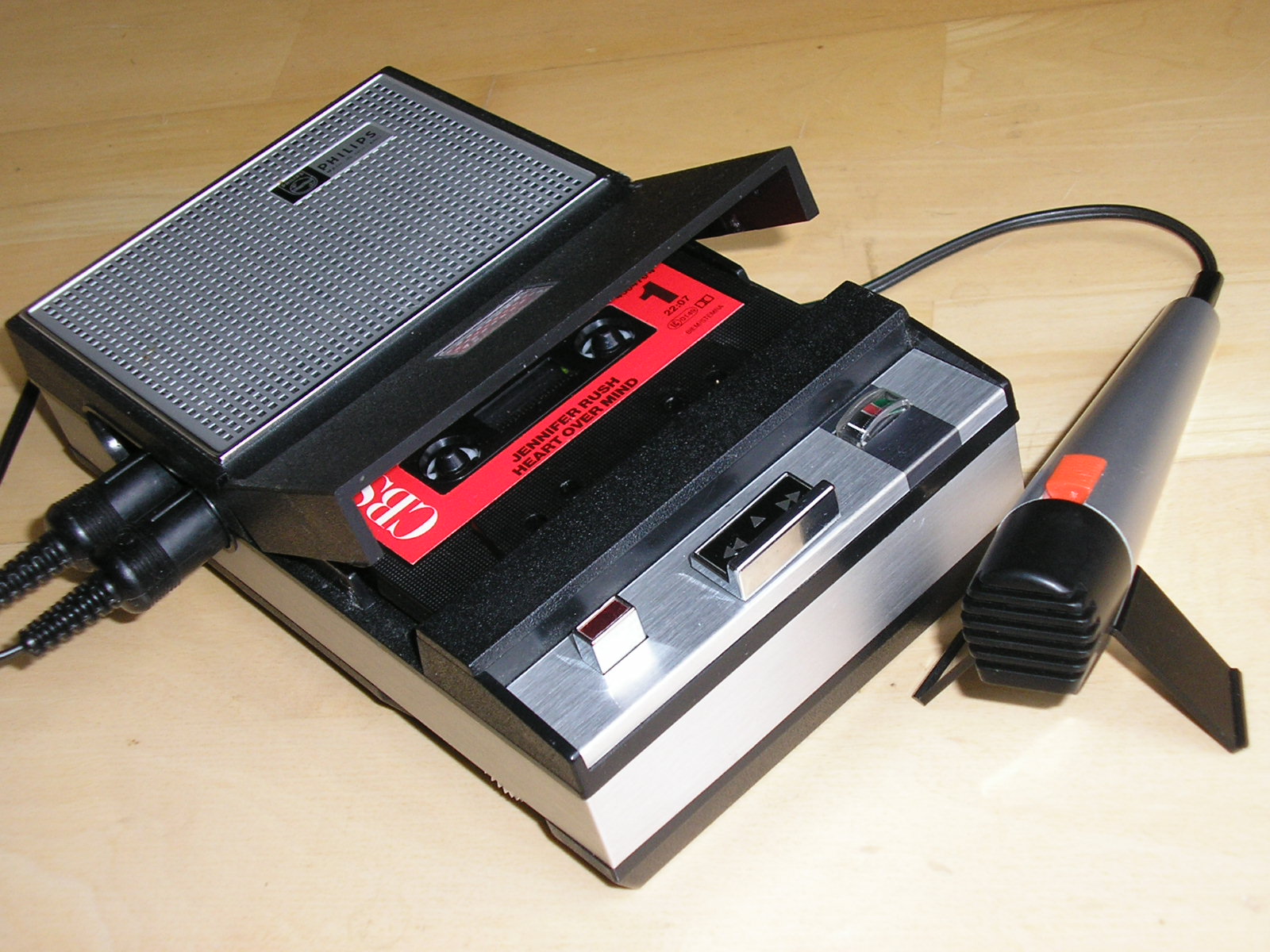
“We expected it to be a success, but not a revolution”: How Lou Ottens Invented the Audio Cassette and Then Destroyed It
One morning, Rolling Stones guitarist Keith Richards noticed that the new cassette tape he had put in the Phillips recorder he always kept beside his bed had run out to the end. So he rewound it and listened. At first, Keith heard only snoring on the recording and then two minutes of an interesting guitar riff. He didn’t remember writing the chords, but he must have woken up from a dream and recorded it. Eventually, he gave the tape to Mick Jagger and asked him to write the words. Richards didn’t think the song was commercial enough for a single. But he was outvoted by the band, and the song was released. That’s how ‘(I Can’t Get No) Satisfaction’ became The Rolling Stones number one record.
All this happened in 1965, literally two years after Philips presented the first audio cassette and portable tape recorder at an exhibition in Berlin. So if it were not for Philips engineer Lou Ottens, the history of the Rolling Stones and the entire musical history could have followed a completely different path, probably more thorny. Ottens has always set himself to make his inventions easier, smaller, cheaper, and more accessible to everyone. This applied to tape recorders, audio cassettes, and then CDs.
Mr. Ottens always emphasized that his inventions were a result of teamwork. “I can be credited for the idea and a number of ideas in it, but the draftsmen, the electrical designers, and the industrial designer, they have done the work. I haven’t done anything special,” the engineer said. He cared little about fame, but he knew exactly what he was working for.
Smaller, easier, cheaper
Lodewijk Frederik Ottens was fond of technology since childhood; he constantly invented something. As a teenager, he assembled a receiver with which he listened to the underground “Orange Radio” programs during the Second World War. This London channel broadcast speeches by Dutch political leaders in exile, such as Queen Wilhelmina. Lou Ottens even managed to make an antenna that could cope with German interference.
After the war, Ottens studied mechanical engineering at the Delft University of Technology, and at the same time, he began working at an X-ray technology factory. After receiving his degree, he began working at Philips in 1952. In eight years, he became the head of product development, and in a year, the first portable tape recorder, the EL 3585, was created.
However, all tape recorders of that time were of the reel-to-reel type. That is, they recorded and reproduced sound using a magnetic tape wound on a reel. The tape had to be manually pulled through the magnetic head, and the procedure was not easy. So the company soon set about developing a completely new product.
According to legend, it all started because one night Lou wanted to listen to some kind of classical music. He fiddled with a reel-to-reel tape recorder for a long time, inserted a magnetic tape, and in the end was so annoyed of dealing with it that in the morning, he came to work with a new idea. He needed to create an audio device that would be smaller, cheaper and, most importantly, easier to use.
“This legend is not very flattering for Lou: the cassette was born from the clumsiness of a very clever man,” his Philips colleague Willy Leenders later said in an interview for the 2016 documentary “Cassette: A Documentary Mixtape.” Ottens himself noted that he was annoyed “with the clunky, user-unfriendly reel-to-reel system,” so he decided to work on new technology. Be that as it may, subsequently, Lou made life easier not only for himself but also for millions of users.
The cassette was born from the clumsiness of a very clever man.
Otten’s team began working on the new portable cassette recorder and compact cassettes that were also supposed to use less power and sound better. Ottens himself made from a wooden block the prototype cassette that was small enough to fit inside a jacket pocket. This is how the Philips EL 3300 tape recorder appeared in 1963.
What happened to the prototype cassette that was made of wood? According to Philips Museum Director Olga Coolen, it „was lost when Lou used it to prop up his jack while changing a flat tire.”
The prototype cassette was lost when Lou used it to prop up his jack while changing a flat tire.

Portable cassette recorder Philips EL 3302, released in 1968. Photo: Wikimedia Commons
Evolution and revolution
The first cassette format – that used the endless loop technology – was patented much earlier, in 1952. In the 50s, other similar solutions appeared, but none of them were genuinely convenient. Close to the future compact cassette design was the RCA tape cartridge, but the size of this magnetic tape audio format was much bigger: 127 × 197 × 13 mm.
Soon after the new tape recorder, Philips also introduced a new tape format for sound recording: about four times smaller than the standard tape cartridge and half the RCA cassettes’ size. “Smaller than a pack of cigarettes,” the company wrote in its press releases.
The team did not particularly care about the sound quality in the initial stages, assuming that the cassettes would be used mainly by journalists to record speech or nature lovers to record environmental sounds. But even in the case of the first working prototype, the sound was much better than expected, and it became apparent that the cassettes were also suitable for music. That is why the recording time on one side of a cassette was increased from 20 to 30 minutes. This story was retold by Mark Masters, who is writing a book about making cassettes.

Size comparison of RCA cassette (right) with a compact cassette by TDK. Photo: Wikimedia Commons
“We expected it to be a success, but not a revolution,” Lou said in the aforementioned 2016 documentary “Cassette.” Yet, they did bring a revolution to the market: thanks to this invention, underground bands and DJs began to spread punk music and hip-hop. Soon, record companies began releasing entire music albums on cassettes. A few years later, cassette recorders were already installed in cars; ordinary people recorded mixtapes with their favorite songs for each other. Over time, the quality of cassettes and tape recorders improved so much that by the end of the 70s this format became a worthy alternative to vinyl. Of course, it was not only about music – in this way, people also listened to audiobooks and whatever.
It was Ottens who convinced Philips executives to donate cassette technology to Sony, which said it was preparing to release a competing model. He helped establish a uniform standard that ensured that cassettes released in one country would work in another. Philips estimates that around 100 billion cassettes have been sold worldwide.
Ottens convinced Philips executives to donate cassette technology to Sony
.
“Of all the musicians and historians I interviewed for the cassette documentary, Lou was by far the most critical of the format,” Zack Taylor, the director of ‘Cassette: A Documentary Mixtape,’ told Rolling Stone. “When I arrived on his doorstep in 2013, I expected to find a proud engineer, ready to take a bow and talk about the revolution he helped start. In reality, Lou couldn’t understand why people were still talking about the primitive, lo-fi cassette, even as the format celebrated its 50th anniversary. As an engineer, he was always focused on fidelity and reliability (two things that cassettes aren’t exactly famous for).”
New compact
In the 70s, Ottens was already active in the team that created the CD technology. This time Philips and Sony have teamed up and released a common format. “When your time has gone, it’s time to disappear,’ Lou said at his meeting with Taylor. ‘If there are better products than the cassette, then you move on. I don’t believe in eternity.’”
When your time has gone, it’s time to disappear.
The first CD with a diameter of 12 cm was presented in 1980. As before, Lou insisted that the product should be smaller, even believed that half a centimeter could be cut from the final result. The name “compact disc” was chosen in the hope that the new invention would be associated with the compact cassette and repeat its success – and so it happened. The CDs became the next standard for sound recording, and they largely drove audio cassettes from the market. Over the entire time, more than 200 billion units of CDS have been sold.
“The best thing about the compact cassette story,” the newspaper Nederlands Dagblad wrote in 2011, “is that its inventor also caused its downfall.”
Ottens was notoriously unsentimental about his legacy and inventions. When asked about his career, he said his biggest regret was that Sony and not Philips had created the iconic cassette tape player, the Walkman. “The cassette is history,” said Ottens in a 2013 Time Magazine story. “I like it when something new comes along.”
Cover Photo: Jerry Lampen / ANP MAG / ANP via AFP
Translated by Lubov Borshevsky
New and best




